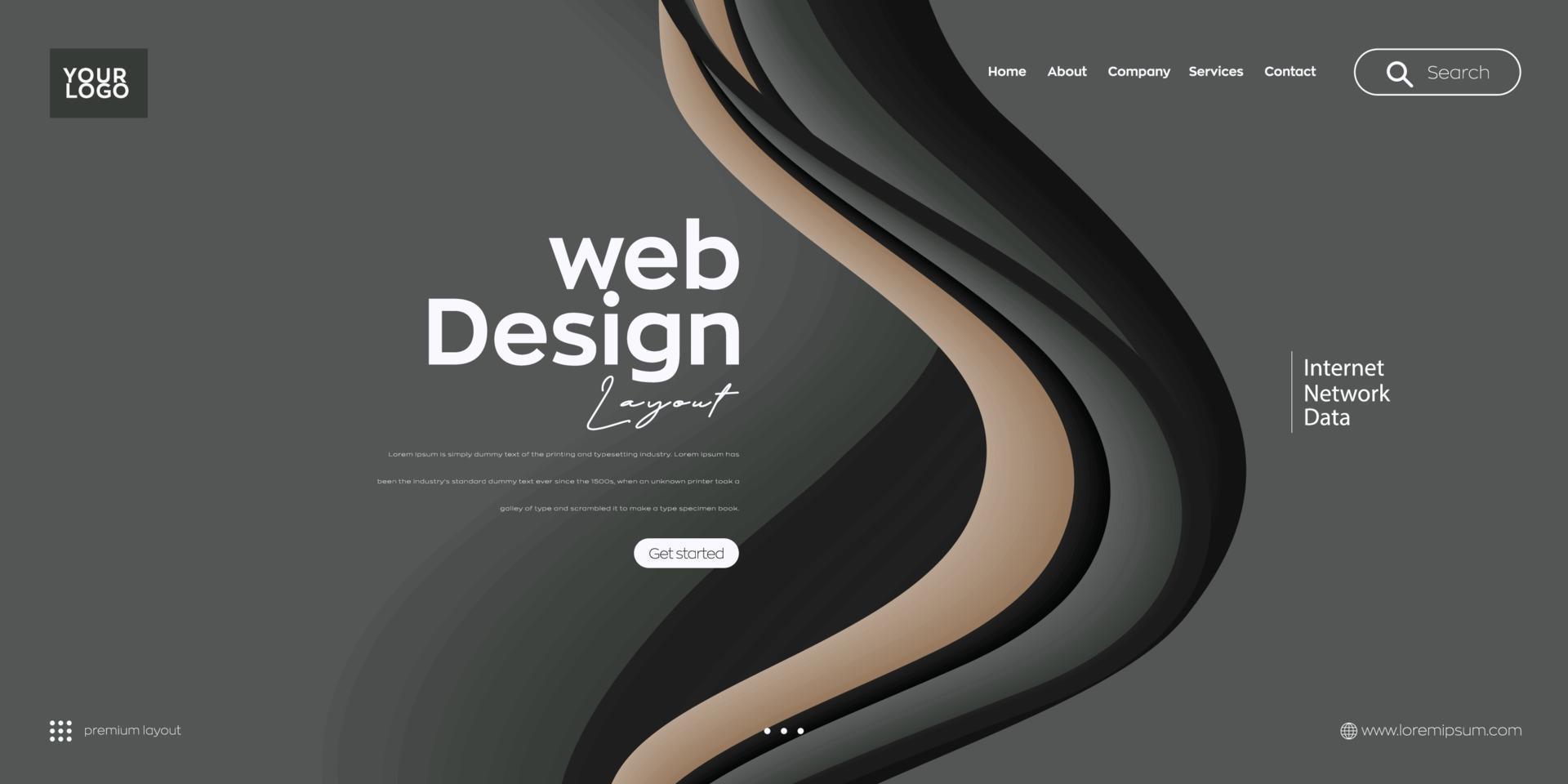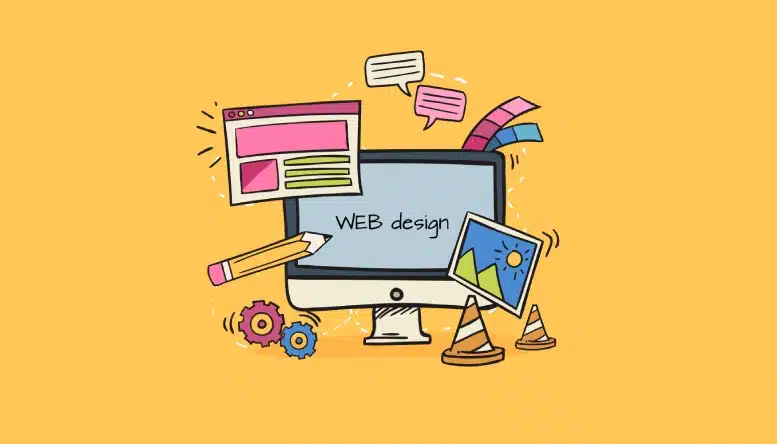Innovative Aligned Position Web Design: Future-Proof Websites for Businesses in Every Niche
Innovative Aligned Position Web Design: Future-Proof Websites for Businesses in Every Niche
Blog Article
The Very Best Kinds of Website Design to Improve Customer Experience and Interaction
In the ever-evolving landscape of digital communication, the effectiveness of Web style considerably influences individual experience and involvement. Different layout approaches, such as minimal, receptive, and interactive designs, each deal unique benefits that can deal with diverse individual needs. Comprehending which kinds of Web layout best offer these purposes can be critical for organizations intending to boost consumer complete satisfaction and retention. The inquiry remains: which style components absolutely resonate with users and foster significant engagement? The exploration of these principles reveals essential insights that may redefine your method to website design.
Minimalist Website Design
As digital landscapes come to be increasingly messy, minimal Web style has actually become an effective technique to improving individual experience. This style ideology focuses on simpleness, focusing on vital aspects while getting rid of unneeded disturbances. By making use of enough white room, simple navigating, and a minimal shade combination, minimalist design fosters quality and routes individual interest to vital content.
The core concept of minimal website design is to create a smooth interaction for users. By decreasing cognitive load, customers can quickly understand information without really feeling bewildered. This straight technique not just enhances usability yet likewise encourages involvement, as site visitors are most likely to explore a website that is simple and aesthetically attractive to navigate.
Furthermore, minimal layout often stresses typography and imagery, using these components strategically to communicate messages efficiently. In significance, minimalist Web style is not simply a fad; it is a thoughtful approach that identifies the importance of user-centered style.
Receptive Web Layout
In today's varied digital setting, receptive Web layout has actually ended up being important for producing a smooth customer experience throughout a plethora of devices. As customers accessibility internet sites on smartphones, tablets, laptops, and desktops, the capacity of a website to adapt its design and web content to various screen sizes and resolutions is critical.
Receptive Web layout uses versatile grids, pictures, and CSS media queries to guarantee that Web material exists ideally, despite the gadget used. This method not only enhances the aesthetic charm of a web site however likewise considerably improves use. Customers are more probable to involve with a site that supplies a regular experience, as it gets rid of the aggravation of having to zoom in or scroll exceedingly.
By taking on responsive style, businesses can enhance their presence and get to a wider target market. In recap, receptive Web design is a basic method that enhances customer experience, engagement, and overall complete satisfaction.
Interactive Web Design
Responsive website design lays the groundwork for improving individual experience, yet interactive Web style takes this an action further by engaging individuals in an extra dynamic method - Aligned Position Web Design. By integrating components such as animations, clickable prototypes, and real-time responses, interactive Web design mesmerizes customers, drawing them right into a richer surfing experience
This method not only promotes involvement however additionally motivates customers to discover content actively as opposed to passively eating it. Techniques such as gamification, where individuals make incentives for finishing jobs, can significantly enhance the time spent on a site and enhance general contentment. Additionally, interactive functions can streamline intricate info, making it much more absorbable and delightful.

Incorporating interactive style components can also bring about higher conversion rates, as customers are more probable to engage with a website that proactively includes them. Aligned Position Web Design. Inevitably, interactive Web layout changes individual experiences right into memorable journeys, making certain that visitors return time and once again
Flat Design
Defined by its minimalistic approach, level layout stresses simpleness and functionality, stripping away unneeded components and concentrating on essential features. This style approach focuses on functionality, making sure that individuals can browse user interfaces with convenience and performance. By using a tidy visual, flat design eliminates the clutter typically discovered in much more elaborate designs, consequently boosting individual emphasis on material and performance.
The trademark of flat style depends on its use of bold colors, simple typography, and geometric forms. These aspects add to an aesthetically attractive interface that is both contemporary and approachable. In addition, level style fosters a feeling of quality, enabling individuals to determine vital actions and information without disturbance.
Additionally, level design is especially effective in receptive Web style, as its simpleness translates well throughout numerous devices and screen dimensions. By concentrating on important functions, level design not only meets user requirements yet also motivates smooth communication, making it an important component of efficient Web layout strategies.
Adaptive Web Layout
Adaptive Web layout tailors the user experience by producing numerous repaired layouts customized to various display dimensions and devices. Unlike responsive design, which fluidly readjusts a solitary layout, adaptive design utilizes unique designs for details breakpoints, guaranteeing optimum presentation on numerous platforms. This method enables designers to focus on the special features of each device, enhancing functionality by providing exactly what individuals need based on their context.
One of the main advantages of adaptive website design is its ability to optimize lots times and performance. By serving tailored material and images that fit the user's device, websites can reduce information use and enhance loading speeds. This is especially helpful for customers with slower links or limited information strategies.

Furthermore, adaptive design helps with an extra controlled and constant branding experience. Given that designers develop multiple designs, they can make certain that the visual aspects straighten with the brand's this identification across different systems - Aligned Position Web Design. This results in a cohesive individual experience, boosting engagement and advertising customer retention
Conclusion
In verdict, the integration of minimalist, responsive, and interactive Web layout principles substantially improves customer experience and engagement. Minimalist style cultivates quality and emphasis, while receptive layout guarantees versatility throughout numerous tools, promoting ease of access. Interactive design astounds users official statement with dynamic aspects, urging exploration and customization. Jointly, these layout approaches contribute to the creation of easy to use environments that not just enhance contentment yet additionally drive greater conversion prices, emphasizing their vital significance in modern Web layout strategies.

Minimalist style promotes quality and emphasis, while receptive style makes certain adaptability across various devices, promoting ease of access. Collectively, these style comes close to contribute to the creation of user-friendly environments that not only improve complete satisfaction however also drive greater conversion prices, emphasizing their crucial significance in contemporary Web layout methods.
Report this page